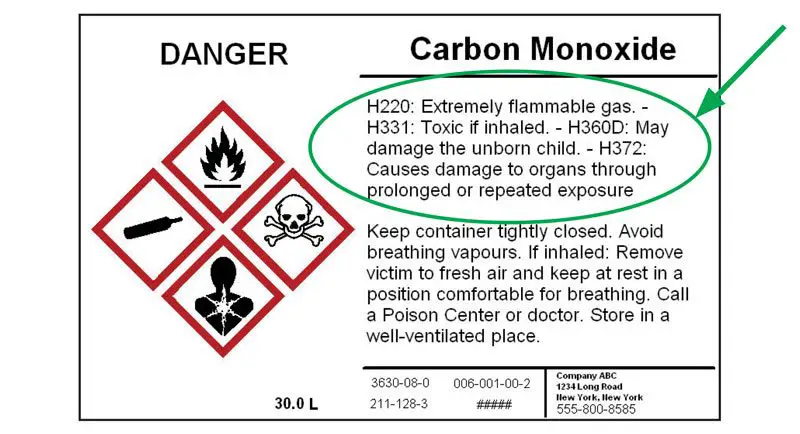What Is A Clp Label For Wax Melts?
What are CLP labels?
CLP stands for Classification, Labelling and Packaging. CLP labels are labels that provide information about the hazards of a chemical product and how to handle it safely. They are required by the CLP Regulation (EC) No 1272/2008, which implements the Globally Harmonised System (GHS) for classifying and labeling chemicals within the European Union.
The purpose of CLP labels is to communicate hazard information about dangerous substances and mixtures to protect users from any potential dangers. The labels use standardized symbols, signal words, hazard statements and precautionary statements so that the hazards and risks of chemicals can be easily understood, regardless of which language the label is printed in.
The CLP Regulation sets out the legal requirements for labeling hazardous chemicals. Any substance or mixture classified as hazardous must be labeled before it is placed on the market. The label must be written in the official language(s) of the Member State(s) where the substance or mixture is placed on the market, and it must include the product identifier, supplier details, hazard pictograms, signal word, hazard statements and precautionary statements.
The requirements aim to provide a high level of protection for human health and the environment by clearly communicating the intrinsic hazards via labeling. Compliance is legally required and enforced by regulatory authorities.
Source: https://ttenvironmental.co.uk/clp-knowledgebase/clp-label-layout/
CLP labeling requirements for wax melts
Wax melts are classified as mixtures under the CLP regulation. As such, they require specific labeling to communicate potential hazards.

The CLP label for wax melts needs to include the following information:
- Product identifier – the name of the product
- Hazard pictograms – graphical symbols indicating hazards
- Signal word – either “Danger” or “Warning” depending on severity
- Hazard statements – standard phrases describing the hazards
- Precautionary statements – measures to minimize risks from hazards
- Supplemental information – other safety directions as needed
Wax melts will likely require hazard pictograms for health hazards like skin or eye irritation. The signal word would be “Warning” in most cases. Hazard statements communicate specific risks like “Causes skin irritation” while precautionary statements provide safety advice like “Wear protective gloves.”
Proper CLP labeling ensures consumers are informed of potential risks when using wax melts. Following the regulations allows businesses to legally sell these products across Europe. Failing to include required information can lead to penalties.
Product identification
According to Article 18 of the CLP regulation, the CLP label must include product identifiers which allow the substance or mixture to be uniquely identified.[1] This includes:
- The name, address, and telephone number of the supplier(s)
- The product identifier, which is usually the product name or chemical name
- The weight or volume of the product
For example, a CLP label for a wax melt product may contain the company name, address, phone number, the product name “Fruity Wax Melts”, and the net weight as “95g”. Including accurate product identifiers is crucial for proper hazard communication and regulatory compliance.
Hazard pictograms
Hazard pictograms are part of the CLP labeling system and are graphic symbols intended to provide quickly understandable information about the hazards of a product. There are 9 different hazard pictograms used under CLP regulations.
Each pictogram consists of a symbol on a white background within a red diamond-shaped frame. The 9 pictograms represent:
- Explosives
- Flammables
- Oxidizing gases, liquids, solids
- Gases under pressure
- Corrosives
- Acute toxicity (severe)
- Health hazards
- Environmental hazards
- Serious health hazards
The rules for which pictograms must appear on a label depend on the hazard classification of the product. For example, if a product is classified as flammable, then the flame pictogram must be included on the label. Typically, multiple pictograms are required to convey all applicable hazards. Using the proper CLP pictograms is a critical part of hazard communication and helps ensure safe handling and use.
Signal words
CLP labels must include either the signal word “Danger” or “Warning” to indicate the relative level of severity of the hazard. “Danger” indicates more severe hazards, while “Warning” is used for less severe hazards.
The rules for which signal word to use are based on the classification of the hazardous product:
- If any hazard class or category is classified as “Dangerous”, the signal word “Danger” must be used.
- The signal word “Warning” must not be used if any hazard class or category is classified as “Dangerous”.
- When the hazard classification does not include any “Dangerous” classes or categories, the signal word “Warning” must be used (REACHonline.eu, Article 20).
Therefore, for a product with both severe and less severe hazards, the signal word “Danger” takes precedence. Proper use of signal words helps communicate to users the relative risks of the product.
Hazard Statements
Hazard statements describe the nature and severity of a hazard using standard phrases. They are required on CLP labels for hazardous substances and mixtures. Some relevant hazard statements that may be required on CLP labels for wax melts include:
- H228 – Flammable solid
- H302 – Harmful if swallowed
- H315 – Causes skin irritation
- H317 – May cause an allergic skin reaction
- H319 – Causes serious eye irritation
- H412 – Harmful to aquatic life with long lasting effects
The specific hazard statements required will depend on the hazards identified for each individual wax melt product based on its chemical composition and properties. Manufacturers and importers are responsible for classifying and labeling their products appropriately based on CLP regulation.
More information can be found in the ECHA CLP Guidance and the PubChem GHS Classification Database.
Precautionary statements
Precautionary statements provide recommended measures to minimize risks from exposure to hazardous chemicals. Under the CLP regulations, precautionary statements must be included on product labels for certain hazard classes and categories. There are five types of precautionary statements:
- Prevention statements – provide measures to minimize exposure to a substance or mixture, such as wearing protective gloves/clothing and avoiding release to the environment.
- Response statements – describe recommended actions if exposed to the substance, like seeking medical advice if skin irritation occurs.
- Storage statements – provide guidance on safe storage conditions like keeping cool and containment requirements.
- Disposal statements – describe proper disposal methods for the substance, container and contaminated materials.
- Supplemental first aid statements – provide immediate treatment instructions if exposed such as rinsing skin with water.
The specific precautionary statements required on a CLP label depend on the substance’s hazards. For example, a flammable solid may need statements like “Keep away from heat, hot surfaces, sparks, open flames and other ignition sources.” An irritant liquid could require “Wear protective gloves and eye protection.” All applicable precautionary statements based on identified hazards must be included.
Precautionary statements aim to minimize risks and prevent adverse effects from handling, storage, and disposal of hazardous substances. Following these recommended safety measures is critical for protecting human health and the environment.
Supplemental information
The CLP regulation requires certain supplemental information to be included on the product label in addition to the core labeling elements. This includes:
- Expiry date, where applicable – This indicates the date up to which the product is expected to retain its full effectiveness and properties when stored under the prescribed conditions.
- Batch number – This allows for the batch-specific identification of the product.
- Information on safety data sheets – The label should include details on how to access the safety data sheet for the product. This provides additional health and safety information.
- Disposal information – Instructions for proper disposal of the product and its packaging.
Other supplemental information that may be relevant includes:
- Net quantity of contents
- Name, address and telephone number of the supplier
- Product identification number
- Instructions for use
- Any additional information required by other relevant regulations
The supplemental information should be placed in an area separate from the core hazard labeling elements. The information provided should be clear, comprehensive and helpful for users of the product.
Labeling small packaging
Small packaging refers to packages with a volume of 125mL or less. For small packaging, the CLP regulation allows some exceptions and reduced labeling requirements:
According to the ECHA guidance, if the contents are 125mL or less and it is not practical to label the small packaging itself, suppliers can affix the label information on an outer packaging, tie-on tag, or insert leaflet.
The Netherlands Chemichals Safety Board states that for small packaging, the supplier can decide whether to include certain hazard and precautionary statements on the label. Only the product identifier, supplier information, and hazard pictograms are mandatory.
So in summary, small packaging allows more flexibility, such as omitting certain label elements or moving the information to secondary packaging, inserts, or tie-on tags. But core identification and hazard communication must still be present.
Compliance and enforcement
The CLP regulation is legally binding across the European Union. There are penalties for non-compliance to motivate manufacturers, importers and downstream users to properly classify, label and package hazardous chemicals.
The main penalties for non-compliance include fines, naming and shaming, and imprisonment in severe cases. The enforcement agency is the Health and Safety Executive (HSE) in the UK. They have a national intelligence team that investigates reports of non-compliance and takes enforcement action as needed. The HSE can conduct unannounced inspections, take samples for analysis, seize goods, and prosecute companies or individuals.
If you see non-compliant products on the market, you can report them to the HSE. The HSE advises trying to resolve the issue with the supplier first if possible. If that fails, submit a detailed report via their online form or call their incident contact center. The HSE will evaluate reports and conduct enforcement activities where warranted. Consistent enforcement helps ensure fair competition and safety across chemical supply chains.[1]





